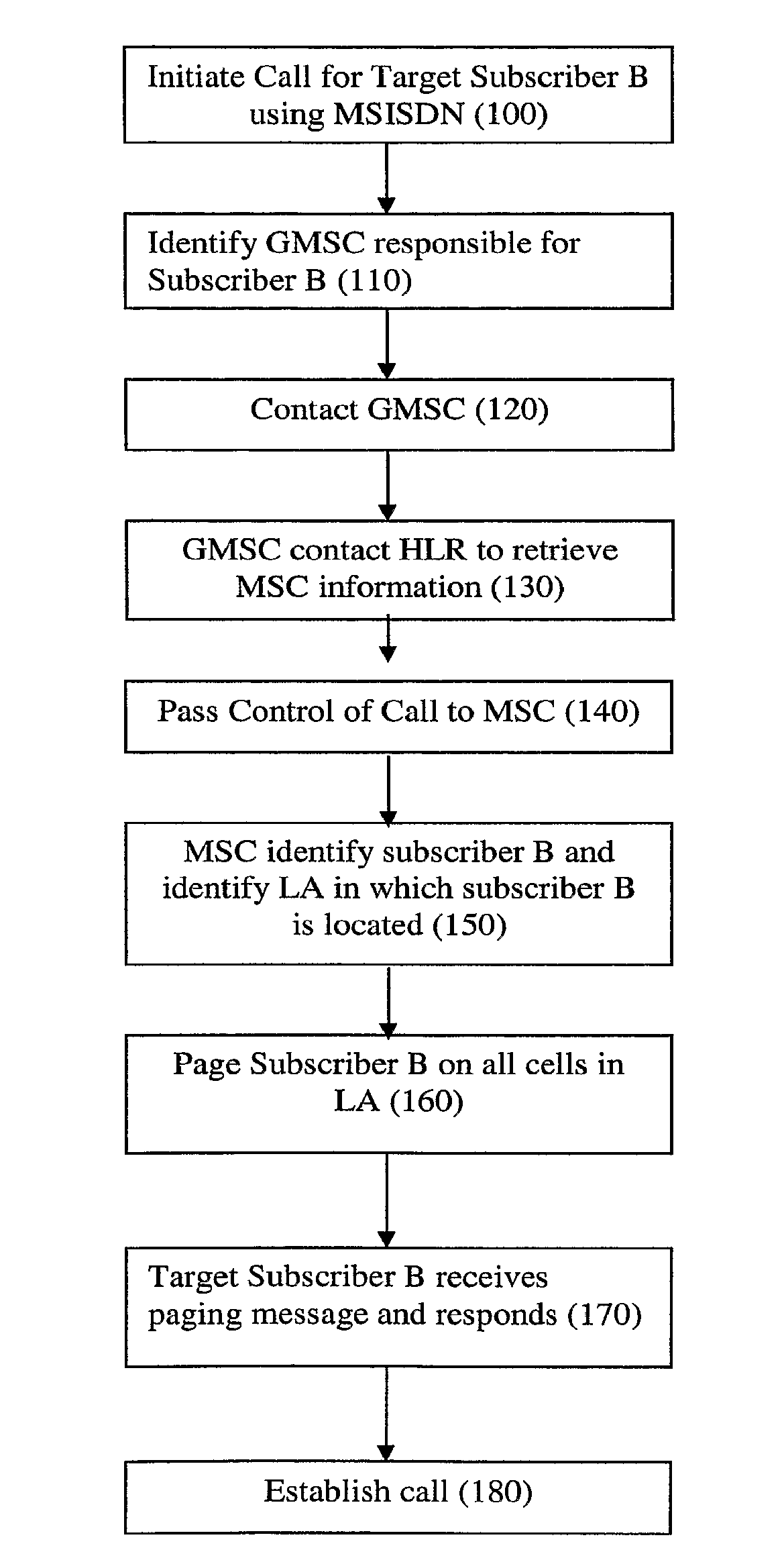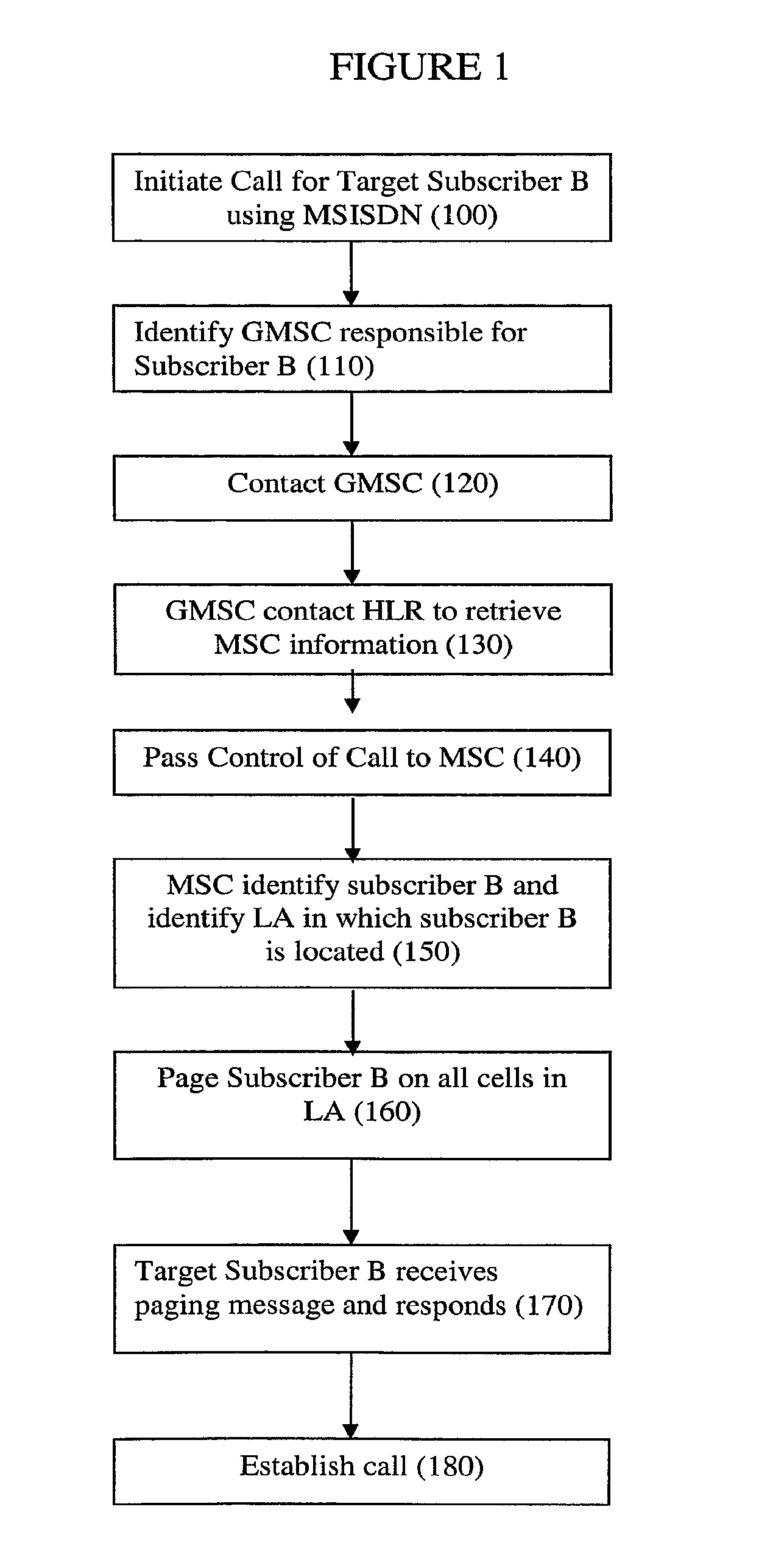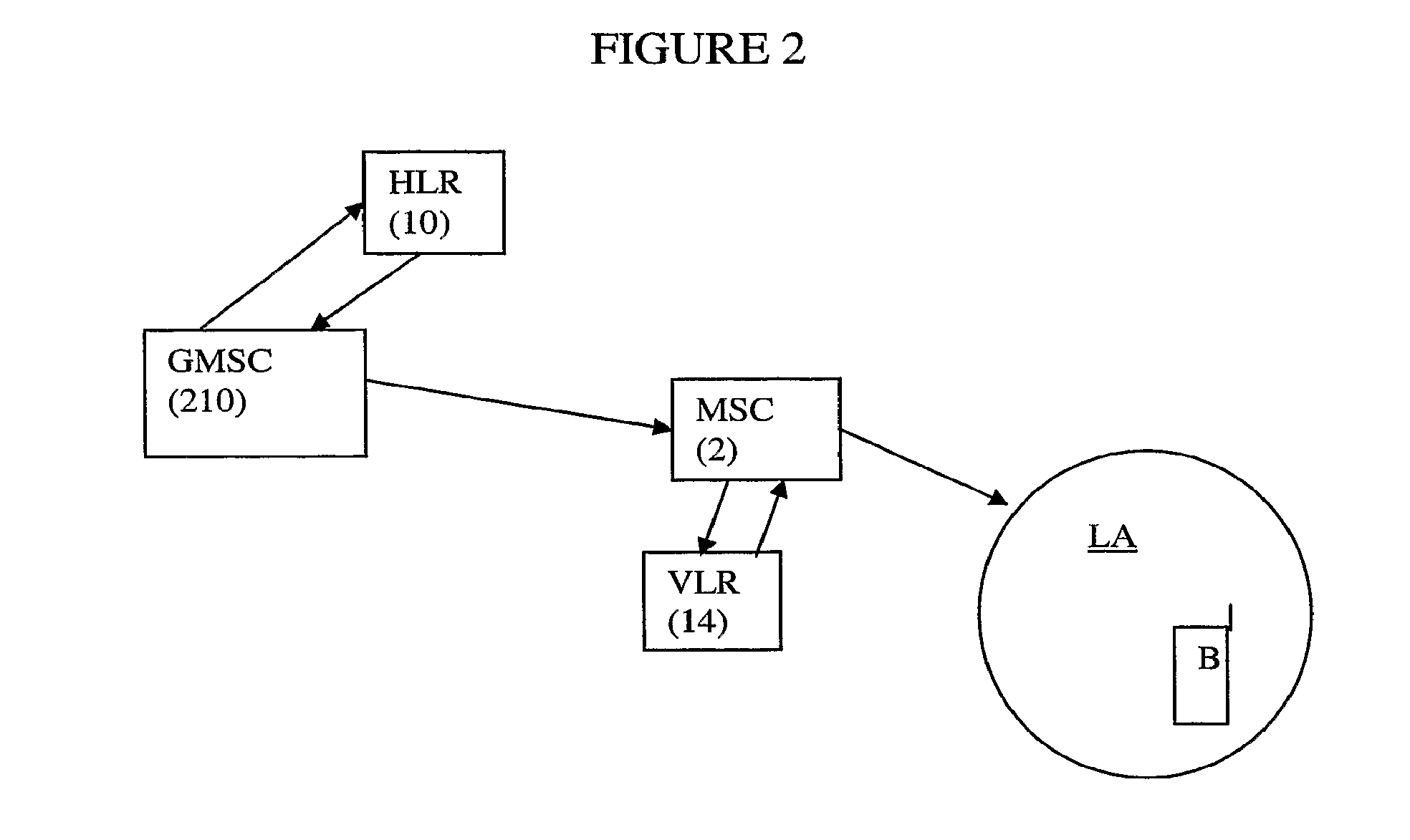Telecommunications networks and devices
a technology of telecommunication networks and devices, applied in the field of telecommunication networks, can solve the problems of limited capacity of such adsl backhauls, waste of signalling resources, and additional challenges, and achieve the effect of reducing the use of signalling resources
- Summary
- Abstract
- Description
- Claims
- Application Information
AI Technical Summary
Benefits of technology
Problems solved by technology
Method used
Image
Examples
first embodiment
[0081]With this background in mind, an implementation of the invention will now be described, which seeks to minimise unnecessary signalling in regard to closed APs.
[0082]Conventionally, when a mobile terminal is in idle mode and moves from a first location area to a second location area, the mobile terminal detects that a different Location Area identity (LA ID) (from that stored in the mobile terminal) is being broadcast by the local base station / AP. The mobile terminal then sends a location area update request to the core network 12 / MME. The request includes the first (current) LA ID and the mobile terminal's current Temporary Mobile Subscriber Identity (TMSI). The MSC / MME with which the mobile terminal is currently registered then sends a new TMSI to the mobile terminal 1. When the mobile terminal moves from a first (current) location area to a second location area, and the second location area is administered by a different MSC / MME, similar steps occur and in addition the diffe...
second embodiment
[0096]According to the invention, APs are excluded from the predefined location areas / tracking areas (LAs / TAs) configured by the operator. By excluding the APs from the TAs it is possible to control a UE's ability to access the APs. The Tracking Areas are hence restricted to base stations in the macro-layer.
[0097]Therefore according to this second embodiment of the invention, the APs are not given a LA ID / TA ID or their LA ID / TA ID is set to “null”. Each AP in this embodiment only broadcasts its Cell ID, and not a unique LA / TA ID. Since the APs only have a unique cell global identity, the UEs do not consider them to be accessible merely by virtue of the information broadcast. Therefore, by virtue of not broadcasting a TA ID, the UEs will not consider the AP as a possible point of access; further information needs to be acquired by the UE before the AP will be considered a possible point of access. In other words, since there is no unique LA / TA ID information, the UE will initially t...
PUM
 Login to View More
Login to View More Abstract
Description
Claims
Application Information
 Login to View More
Login to View More - R&D
- Intellectual Property
- Life Sciences
- Materials
- Tech Scout
- Unparalleled Data Quality
- Higher Quality Content
- 60% Fewer Hallucinations
Browse by: Latest US Patents, China's latest patents, Technical Efficacy Thesaurus, Application Domain, Technology Topic, Popular Technical Reports.
© 2025 PatSnap. All rights reserved.Legal|Privacy policy|Modern Slavery Act Transparency Statement|Sitemap|About US| Contact US: help@patsnap.com



